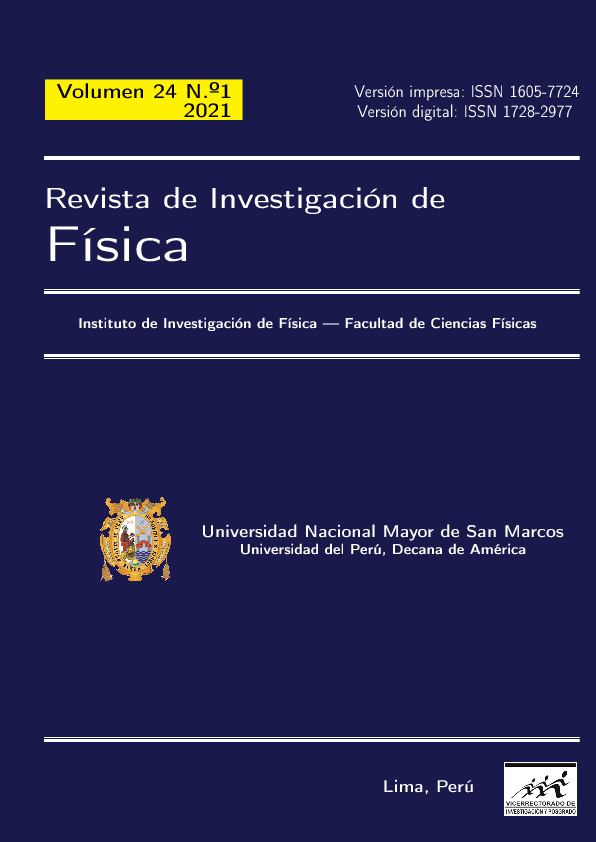Development of a portable electrical impedance spectrometer for the analysis and characterization of blood tissue
DOI:
https://doi.org/10.15381/rif.v24i1.20241Keywords:
Electrical impedance, hemoglobin, Nyquist, blood tissue, diagnosisAbstract
Using an Analog Discovery 2 as the basis for the development of an electrical impedance spectroscopy (EIS) kit and the adaptation of the Accu-Chek®test strips as a working electrode to perform readings on samples of human blood tissue, it is possible to obtain the corresponding Nyquist spectra for the mentioned tissue. These results indicate a possible correspondence in the electrical impedance signal observed in people with a hemoglobin amount of 14.8 g/dL, 14.7 g/dL, 14.6 g/dL and 13.7 g/dL. It was also possible to simulate with the data obtained the probable graph of a person with 12.7 g/dL of hemoglobin in blood, which corresponds to a patient with anemia. This article analyzes the viability of developing a new less invasive diagnostic method for anemia disease, which is taking place in the Biophysics Laboratory of the Faculty of Physical Sciences - UNMSM.
Downloads
Published
Issue
Section
License
Copyright (c) 2021 Christian Lexequías, Bryan Urcia, Betty Franco, Oscar Baltuano, Galo Patiño

This work is licensed under a Creative Commons Attribution-NonCommercial-ShareAlike 4.0 International License.
THE AUTHORS RETAIN THEIR RIGHTS:
a. The authors retain their trademark and patent rights, as well as any process or procedure described in the article.
b. The authors retain the right to share, copy, distribute, perform and publicly communicate the article published in the Revista de Investigación de Física (for example, place it in an institutional repository or publish it in a book), with an acknowledgment of its initial publication in the Revista de Investigación de Física.
c. The authors retain the right to make a subsequent publication of their work, to use the article or any part of it (for example: a compilation of their works, notes for conferences, thesis, or for a book), provided that they indicate the source. of publication (authors of the work, journal, volume, number and date).






